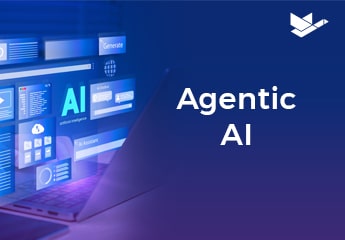Legacy software will not be supported with updates forever, warns Akanksha Rais, Duck Creek’s Senior Manager for Solution Consulting
That would be a half-hearted transformation. You would still be investing in a niche brand and paying a hefty price – only it would be for a sunsetting piece of technology. One could argue that it would support iTunes, good resolution pictures, great apple UX, so it is still an upgrade from a legacy phone. What are we missing out on? The performance, the upgrades, the new games and applications that are supported only with latest versions – and we are just scratching the surface here.
This analogy resonates with the insurers we meet who are in different phases of their transformation journeys. They may have taken steps forward towards transformation but have restricted themselves from going all the way. While the world has moved on to open API-based architecture and cloud-driven SaaS software, there are still transformations being planned that are inches ahead of traditional on-premises installations. Insurers in this position risk being left out of the big evergreen revolution that has engulfed insurance. The insurtech boom is real, and only the foresighted will get on the moving train.
My role involves speaking with prospective clients to discover their aims, understand their pain points, think about how they can go about their digital transformations, and make plans tailored to meet each company’s unique situation. That usually means speaking to C-level execs and to insurers’ business users in most cases. There is a realisation of the issues and pain points which have remained unresolved over the years for various reasons. Often the communication between the spaghetti jumble of existing platforms, home-grown or acquired, becomes the bottleneck. Changing one solution won’t have enough impact, and changing it all becomes an intractable proposition. So how does one deal with this?
Unfortunately, there is no magic potion that could solve it overnight. The solution lies in recognising the most critical parts that impact the books of business with higher priority. Recognising how you could prioritise portions of your business that matter most and tackling it bit by bit. Going for a solution that could be broken into chunks, modularised to resolve one pain at a time and meticulously planning for the next move.
Going for the architecture that not only reduces the pain but also enables you to fly at the same time is the key. Our on-demand platform is infinitely configurable, enabling insurers to innovate new ideas, new solutions, and new policies, tailored to meet complex and ever-evolving needs.
This conversation would be incomplete without quoting the term “technical debt.” This is a key concept for us, to be able to evaluate the spend versus the opportunities that are missed, in many cases because new systems, technology, or products are not ready to be launched into the market.
An analogy I often refer to for the technical debt situation is the popcorn story. When a company started making popcorn in coconut oil, it tasted great, the public loved it, and it sold well. The downside was that it contained a lot of saturated fats. The health information was published, but consumers were unmoved – until the government decided to advertise that a pack of the popcorn was equivalent to eating a giant American breakfast with extra sausages on the side. This finally struck a chord, the demand for the crispier but unhealthy popcorn reduced, and the supply chain automatically adapted to use a healthier oil.
We see that the facts could be hard-hitting for the insurance industry. Technical debt has started taking tangible shape, and awareness has grown for what insurers could save in terms of maintaining existing systems if they take on the transformation route. It doesn’t stop there, as the figures are also being evaluated on what they are missing out on in terms of newer opportunities.
It is, however, difficult to evaluate where they could be in the next five years. If your competitors are launching 50+ new insurance products every year, they are getting ahead of you. There is no price evaluation for this kind of debt. You don’t sow seeds when you want to eat fruit, you do it a season or two before. Planning, evaluation, and execution; it all takes time. Foreseeing the change and being a part of the journey early on makes winners. Hence, the next time you buy an iPhone in 2022, we recommend you go for the latest and the greatest, the 14 Pro Excel Vita or whatever it is called, because you know you are looking into the future that way.
Akanksha Rais is a self-defence enthusiast, an avid gardener, and mother of two dragons (girls 6 and 14 years old). She is also a Senior Manager for Solution Consulting at Duck Creek Technologies in Europe.





